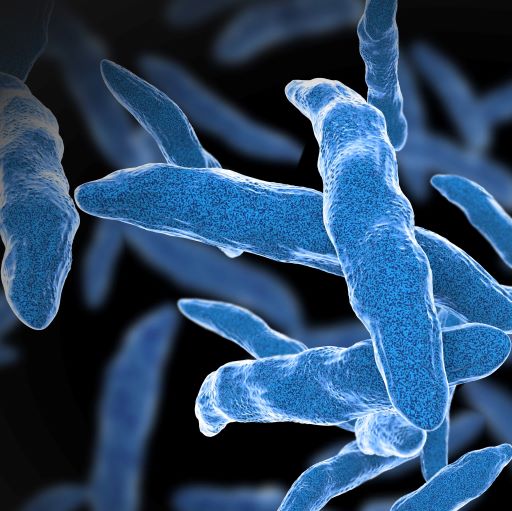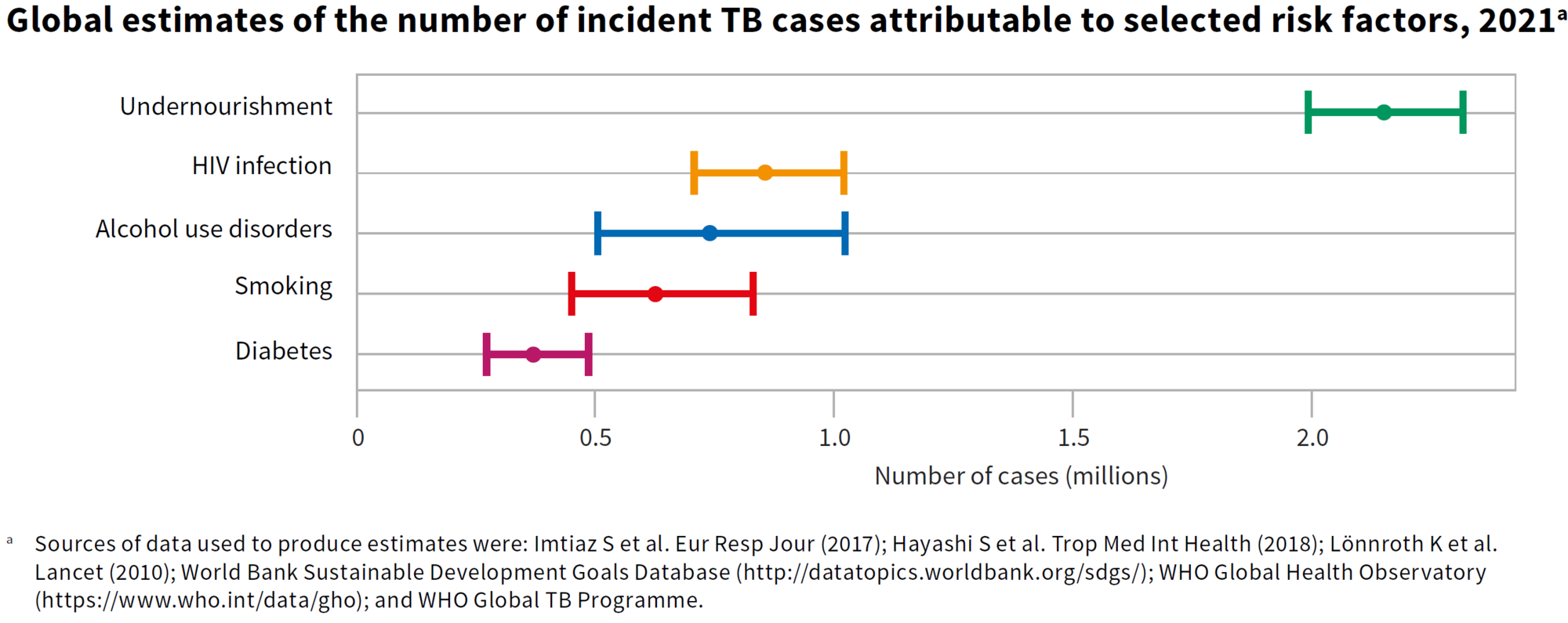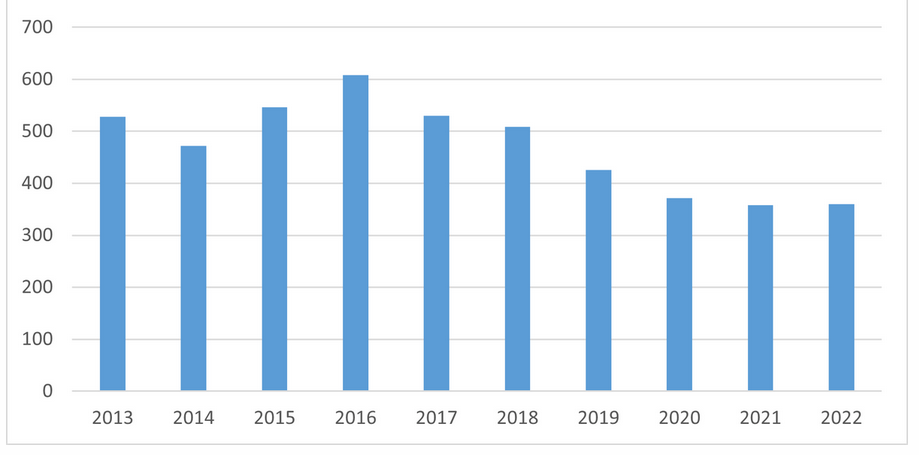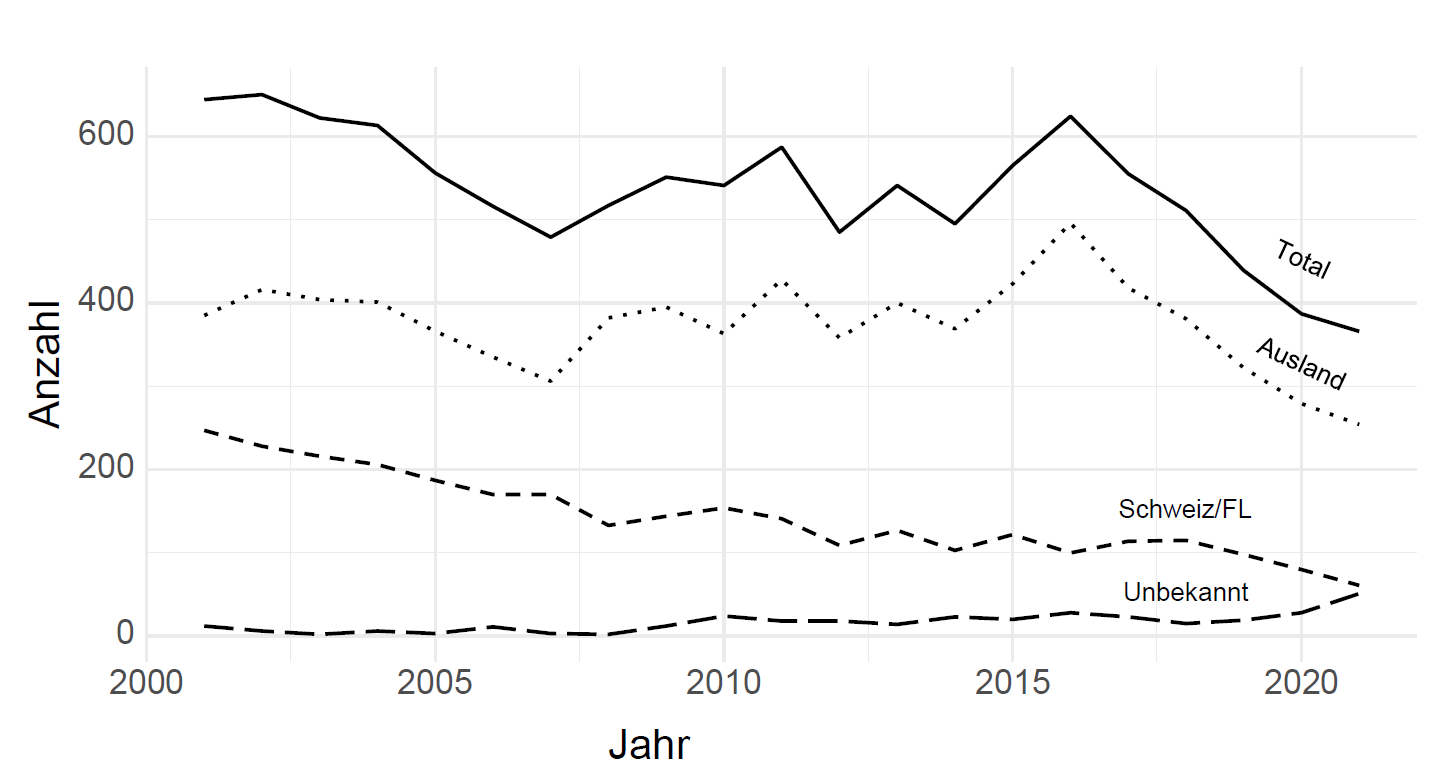

TB - some global facts
- Globally, more than 10 million people develop TB each year; 10.1 million people in 2020, 10.6 million people in 2021 (incidence; WHO estimates). And 1.6 million people died from TB in 2021.
- Of the 10.6 million with TB, 6 million were men, 3.4 million women and 1.2 million children. Of the 10.6 million cases, only 6.4 million were diagnosed and reported (60%). Disadvantaged, impoverished populations have great difficulty accessing well-functioning health services. Other reasons why TB remains undetected are that not all patients develop symptoms and therefore do not get tested, and that false-negative test results occur.
- In 2021, around 450,000 people worldwide developed multidrug-resistant TB (the two main TB drugs no longer work). Only about one-third of them received adequate treatment (which requires taking multiple drugs for 9 to 20 months).
- However, progress has been made in the fight against multidrug-resistant TB, including a newly developed treatment regimen that lasts only 6 months. Several countries have started using this new treatment regimen.
- Worldwide, 48% of households where someone falls ill with TB face catastrophic costs: they suffer a financial loss of more than 20% of their household income: TB-related expenses and loss of income from work.
- In 2022, around US$ 13 billion would have been required worldwide to adequately address the TB pandemic (for diagnosis, treatment, care and prevention). This amount is expected to rise to $19.6 billion per year between 2023 and 2030. In 2021, however, only $5.4 billion was available.
- TB research will need $5 billion per year in the coming years. However, in the last three years, only about 0.9 billion has been made available each year.
"In 2021, around 450,000 people worldwide developed multidrug-resistant TB (the two main TB drugs no longer work). Only about a third of them received adequate treatment."
- By the end of 2021, more than $100 billion had been spent on developing COVID-19 vaccines. Only $0.1 billion was spent on developing a new TB vaccine in 2021 (the existing BCG vaccine provides very modest protection).
- The immediate cause of the spread of TB is largely the fact that many TB patients are infectious and cough for months before receiving the necessary TB drugs (which usually stop transmission within days). The underlying causes of TB are mainly poor nutrition, HIV infection and alcohol abuse. The WHO puts it this way:

Tuberculosis in Switzerland
- In 2021, about 410 people in Switzerland contracted TB, and about 740,000 people in the Philippines. Taking into account the size of the population, TB is 140 times more common in the Philippines than in Switzerland. The Philippines is the country most affected by TB in the world.
- From 2013 to 2018, between 472 and 608 cases were reported annually, with a decreasing trend thereafter (see graph). Between 55% and 63% of the reported cases were male, a proportion typical of most countries.
Number of people with TB, reported in Switzerland per year (2013 to 2021)

The chart below shows that around three quarters of those diagnosed with TB in Switzerland were born abroad (period: 2000 to 2020).

TB and the context
What steps must be taken to defeat tuberculosis? As can be seen from the above, much more money needs to go into the actual fight against TB and into research. Public-private partnerships are important in research. This is a key approach to mobilising the pharmaceutical industry. Such a partnership led to the production of the new TB drug pretonamid a few years ago.
The fight against poverty, and thus against malnutrition and global hunger, are also crucial. These are fundamental factors if we are to contain tuberculosis - and not just in relation to TB. For this to happen, corresponding political goals must finally be achieved:
- All countries, especially the world’s poorer countries, should spend a higher proportion of their national budget on health, education and social security.
- Wealthy countries must meet the UN target of spending 0.7% of gross national income on official development assistance. In Switzerland, this spending was only 0.51% in 2021 (0.46% if asylum costs are excluded); in the US it was only 0.2%.
- If we are to make serious progress in the global fight against TB and other diseases, we must address the complex issues of poverty and injustice.
"Crucial approaches to defeat tuberculosis: fight poverty, malnutrition and global hunger."

Swiss TPH Symposium: The Tuberculosis Pandemic – A Call to Action
References
Federal Office of Public Health 2025. Zahlen zu Infektionskrankheiten / Tuberkulose. Infektionskrankheiten: Zahlen (admin.ch)
WHO 2022. Global tuberculosis report 2022. Geneva: World Health organization; 2022. licence: cc bY-Nc-sa 3.0 iGo. Global tuberculosis report 2022 (who.int)